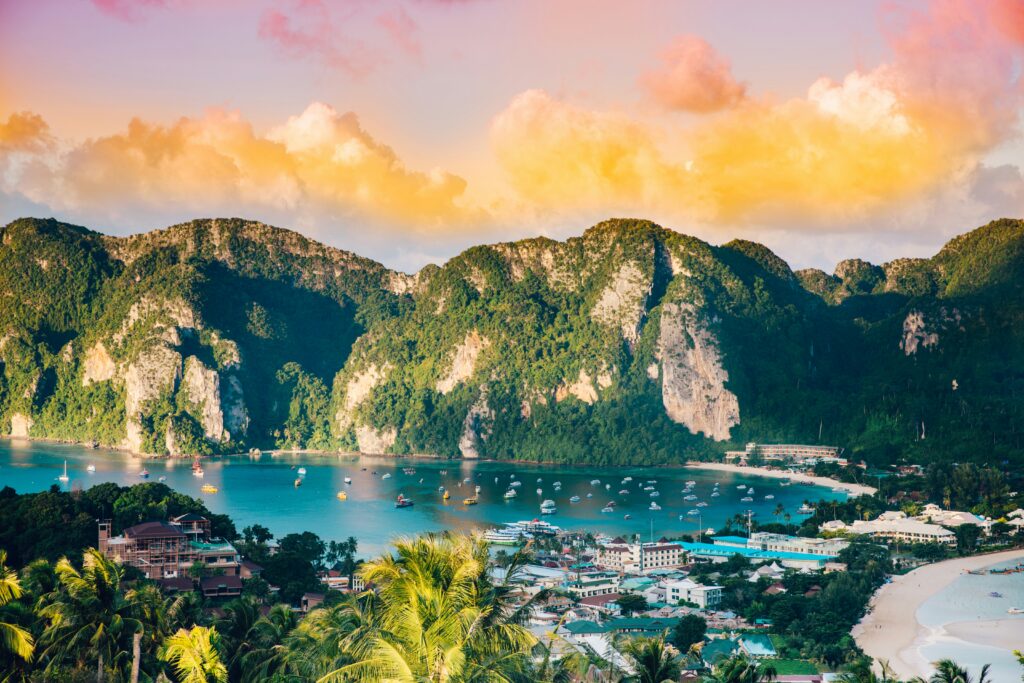Hi Wandies, Learn about the necessary documents, the application processes, and the restrictions associated with each Visa type. Additionally, get insights on general visa information, including how to check visa requirements, extend your stay, and handle travel-related concerns such as lost passports and health requirements.
- Visa-Free Travel
- Visa on Arrival (VOA)
- E-Visa
- ESTA (Electronic System for Travel Authorization)
- Visa Requirements and Restrictions
- Visa Validity and Extensions
- Entry Points and Passport Types
- Specific Visa Types – Tourist, Business, and Student Visas
- Visa Application Process
- Travel-Related Concerns – Documentation, Health, and Insurance
A. Visa-Free Travel
What do you mean by a visa-free destination?
A Visa-free destination is a country that allows travelers to enter without obtaining a visa in advance. It allows individuals to enter a country without undergoing the visa application process. Visitors can typically stay for a specified period for tourism or business purposes. For example, in case of Indian traveler they can travel to Nepal visa-free. In case of U.S. citizens, they can enter the United Kingdom visa-free for up to 6 months.
How long can I stay with a visa-free entry?
The duration of stay varies by country and agreement, typically ranging from 14 days to 6 months. For example: Indians can stay in Bhutan visa-free for up to 14 days. International example: Canadian citizens can stay in Mexico visa-free for up to 180 days.
Do I need to apply for anything before traveling visa-free?
While no visa is required, some countries may require pre-registration or electronic travel authorization. For example: Indians don’t need to apply for anything to visit Nepal visa-free. International example: U.S. citizens need to obtain an ESTA before traveling to countries in the Visa Waiver Program, like France or Germany.
B. Visa on Arrival (VOA)
What is Visa on Arrival (VOA)?
VOA allows travelers to obtain a visa upon arrival at the destination country’s port of entry, without applying in advance. For example: Indians can get a VOA in Thailand for tourism purposes. International example: Many nationalities can obtain a VOA in Indonesia.
What documents are typically required for visa on arrival?
Common requirements include a valid passport, return ticket, proof of sufficient funds, and passport-sized photographs. For example: For VOA in Thailand, Indians need a passport valid for 6 months, return ticket, and proof of funds (10,000 THB per person or 20,000 THB per family). International example: For VOA in Egypt, travelers typically need a passport valid for 6 months, two passport photos, and the visa fee.
How long can I stay with a visa on arrival entry?
The duration varies by country, typically ranging from 14 to 90 days. For example: Indians can stay up to 15 days with a VOA in Thailand. International example: Most nationalities can stay up to 30 days with a VOA in Indonesia.
C. E-Visa
What is an E-Visa?
An E-Visa is an electronic visa obtained online before travel, eliminating the need to visit an embassy or consulate. For example: Indians can apply for an e-Visa to Sri Lanka. International example: Many nationalities can apply for an e-Visa to Turkey.
What documents are typically required for an E-Visa and how to apply for them?
Common requirements include a scanned copy of passport, digital photograph, and sometimes additional documents like hotel bookings or invitation letters. Applications are submitted through the official government website. Indian example: For a Sri Lanka e-Visa, Indians need to upload a passport copy, digital photo, and travel itinerary on the official ETA website. International example: For an Indian e-Visa, international travelers need to upload a passport copy, digital photo, and provide details of their stay on the official Indian e-Visa website.
D. ESTA (Electronic System for Travel Authorization
Planning a trip to the United States? If you’re a citizen of one of the countries participating in the Visa Waiver Program (VWP), you might be eligible to apply for an Electronic System for Travel Authorization (ESTA). This system streamlines the process of entering the U.S. without a visa, but there are specific guidelines and requirements to be aware of. Here’s everything you need to know about ESTA before you go!
What is ESTA?
ESTA is an online system that allows travelers from VWP countries to visit the U.S. for tourism, business, or transit for up to 90 days without needing a visa. Think of it as your digital boarding pass to the United States, designed to simplify your travel experience.
Example Scenario
Imagine you’re planning a spontaneous trip to New York for a week of sightseeing and shopping. Instead of going through the lengthy visa application process, you simply apply for ESTA online. Within minutes, you receive your authorization, and you’re all set to book your flight and accommodation. No stress, no waiting – just the excitement of your upcoming adventure
Who Can Apply for ESTA?
Currently, 40 countries are eligible for the VWP. If you’re from one of these countries and meet the requirements, you’re in luck! A few of these countries include:
- Australia
- United Kingdom
- Japan
- Germany
- France
- South Korea
- New Zealand
For British citizens to qualify, they must hold the unrestricted right of permanent citizenship in the U.K.
How to Apply for ESTA
Applying for ESTA is straightforward. Here’s a step-by-step guide:
- Check Your Eligibility: Ensure you’re a citizen of a VWP country and meet the criteria (e.g., valid passport and no recent travel to restricted areas).
- Visit the Official ESTA Website: Go to the U.S. Customs and Border Protection’s ESTA page.
- Complete the Application: Provide details like name, passport info, and travel plans.
- Pay the Fee: The application fee is $21, payable by credit card.
- Submit and Await Approval: Most applications are approved quickly, but it’s best to apply at least 72 hours before departure.
Important Conditions for VWP Travelers
To use ESTA under the Visa Waiver Program, travelers must meet certain requirements:
- Purpose of Travel: You must be traveling for tourism, business, or transit.
- Passport Requirements: An e-passport is mandatory for VWP travel. This passport has an embedded electronic chip that helps match your identity to your travel document.
- Individual Approval: Each traveler, including infants and children, needs their own ESTA approval.
Restrictions and Exceptions: Visa Waiver Program Improvement and Terrorist Travel Prevention Act
Under the Visa Waiver Program Improvement and Terrorist Travel Prevention Act of 2015, certain travelers from VWP countries may no longer qualify for ESTA if they:
- Have traveled to or been present in North Korea, Iran, Iraq, Libya, Somalia, Sudan, Syria, Yemen, or Cuba after specific dates (March 1, 2011, for most countries and January 12, 2021, for Cuba).
- Are dual nationals of a VWP country and Cuba, North Korea, Iran, Iraq, Sudan, or Syria.
These travelers must apply for a visa at a U.S. Embassy or Consulate. Exceptions may apply for individuals traveling for diplomatic or military reasons on behalf of a VWP country.
Special Notes for VWP Travelers
- Trips to Canada, Mexico, or Nearby Islands: VWP travelers can take short trips to nearby countries and be readmitted to the U.S., provided the entire stay (including side trips) is within the original 90-day limit.
- No Extensions or Status Changes: VWP visitors cannot extend their stay beyond the initial 90 days or change their status in the U.S.
- Traveling to Guam or Northern Mariana Islands: Citizens of certain countries can travel to these territories under a special Guam-CNMI Visa Waiver Program. Check if this applies to your country.
Updating Your ESTA
Once approved, your ESTA is generally valid for two years or until your passport expires. You’ll need to reapply if:
- You obtain a new passport.
- You change your name, gender, or country of citizenship.
- You need to update responses to certain questions on the application.
Visa Requirements and Restrictions
How do I check if I need a visa for a specific country?
Check the official website of the country’s embassy or consulate, or use reliable visa information websites. Indian example: Indians can check visa requirements on the Ministry of External Affairs website. International example: U.S. citizens can check visa requirements on the U.S. Department of State website.
How far in advance should I check visa requirements?
It’s advisable to check at least 4-6 weeks before travel, or earlier for long-term visas. Indian example: An Indian planning to study in the U.S. should check visa requirements at least 3-4 months in advance. International example: A British citizen planning to work in Japan should check visa requirements at least 2-3 months before the intended travel date.
Are there restrictions on activities for visa-free, visa on arrival, or E-Visa entries?
Yes, these entry types typically restrict activities to tourism, business meetings, or short-term non-employment purposes. Indian example: Indians visiting Nepal visa-free cannot work or study without obtaining the appropriate visa. International example: A Canadian entering the UK visa-free cannot work or study for more than 6 months without the appropriate visa.
Can I work on a visa-free or visa on arrival entry?
Generally, no. Working usually requires a specific work visa or permit. Indian example: An Indian cannot work in Thailand on a visa-on-arrival tourist entry. International example: An Australian cannot work in the United States on a visa-free ESTA entry.
B. Visa Validity and Extensions
Can visa-free, visa on arrival, or E-Visa status be revoked?
Yes, immigration authorities can revoke these statuses if travelers violate entry conditions or local laws. Indian example: An Indian’s visa-free status in Nepal could be revoked if they overstay or engage in unauthorized work. International example: A German citizen’s ESTA for the U.S. could be revoked if they misrepresent information in their application.
Can I extend my stay if I entered visa-free, with visa on arrival, or through E-Visa?
It depends on the country’s policies. Some allow extensions, while others require exiting and re-entering. Indian example: Indians can usually extend their stay in Nepal beyond the initial visa-free period by applying at the immigration office in Kathmandu. International example: Tourists in Thailand (including those on VOA) can usually extend their stay once for up to 30 days at local immigration offices.
C. Entry Points and Passport Types
Does visa-free or visa on arrival apply to all entry points?
Not always. Some countries restrict visa-free or VOA entry to specific airports or land borders. Indian example: Indians can enter Nepal visa-free through any entry point, but for Bhutan, they must enter through specific check-posts. International example: The visa-free regime for Europeans entering Brazil applies only to air and sea ports, not land borders.
Do visa-free agreements apply to all passport types?
Usually, visa-free agreements apply to regular passports. Diplomatic or official passports may have different rules. Indian example: While regular Indian passport holders need a visa for Russia, diplomatic passport holders can enter visa-free. International example: U.S. diplomatic passport holders can enter many countries visa-free, even when regular passport holders cannot.
III. Specific Visa Types–Tourist visa, Business visa, and Student visa?
What is the difference between a tourist visa, business visa, and student visa?
These visas differ in purpose, duration, and permitted activities. Indian example: An Indian getting a U.S. B1/B2 visa for tourism/business can stay up to 6 months, while an F1 student visa allows them to study for their entire program duration. International example: A Chinese citizen visiting India on a tourist e-Visa can stay for 30 days, while a business e-Visa allows multiple entries over a year, and a student visa permits study for the course duration.
B. Visa Application Process
Can I apply for a visa at the airport if I arrive without one?
Generally no, except for countries offering Visa on Arrival. Indian example: An Indian cannot apply for a Schengen visa upon arrival in Europe; it must be obtained in advance. International example: A British citizen can’t apply for a visa upon arrival in India, but they can apply for an e-Visa in advance.
IV. Travel-Related Concerns– Documentation, Health and Insurance, Entry Regulations
What happens if my passport is lost or stolen while traveling?
Contact your country’s nearest embassy or consulate immediately to report the loss and apply for an emergency travel document. Indian example: An Indian who loses their passport in the U.S. should contact the nearest Indian embassy or consulate to apply for an Emergency Certificate. International example: A Canadian who loses their passport in Japan should contact the nearest Canadian embassy or consulate to apply for an emergency passport.
Are there any health requirements or vaccinations needed for certain countries?
Yes, some countries require specific vaccinations or health certificates for entry. Indian example: Indians traveling to Yemen need a yellow fever vaccination certificate. International example: Travelers from many countries need to show proof of yellow fever vaccination when entering Brazil.
What is travel insurance and is it necessary?
Travel insurance covers unexpected events like medical emergencies, trip cancellations, or lost luggage. While not always mandatory, it’s highly recommended. Indian example: An Indian traveling to the Schengen area needs to show proof of travel insurance covering at least €30,000 in medical expenses. International example: A U.S. citizen isn’t required to have travel insurance to visit most countries, but it’s strongly advised, especially for medical coverage.
Can I be denied entry even with visa-free, visa on arrival, or E-Visa status?
Yes, immigration officers have the authority to deny entry if they’re not satisfied with the traveler’s documents or intentions. Indian example: An Indian with a valid U.S. visa can still be denied entry if the immigration officer suspects they intend to overstay or work illegally. International example: A British citizen with ESTA approval can be denied entry to the U.S. if they can’t demonstrate sufficient funds for their stay or a clear intention to return home.
Here’s a concise table to explain Visa-Free Travel, Visa on Arrival (VOA), E-Visas, and ESTA:
| Category | Visa-Free Travel | Visa on Arrival (VOA) | E-Visa | ESTA |
|---|
| Eligibility | Passport holders from eligible countries | Passport holders from eligible countries | Available to specific nationalities, depending on the destination | Citizens of Visa Waiver Program (VWP) countries only |
| Purpose of Visit | Short tourism or business trips | Short tourism or business trips | Tourism, business, or other specified purposes | Tourism or business only, for up to 90 days |
| Application Process | No application required | Application completed at the destination’s entry point | Online application submitted in advance | Online application via the U.S. Customs and Border Protection (CBP) website |
| Processing Time | None | Immediate at the border | Varies by country (usually a few days) | Usually within 72 hours |
| Duration of Stay | Varies (typically 30 to 90 days) | Varies by country (often 15 to 90 days) | Specified in approval, often 30 to 90 days | Up to 90 days per visit, within a 2-year validity |
| Documentation Needed | Valid passport | Valid passport, sometimes photos and fee payment | Passport, completed online form, payment, and possibly photos | Passport with e-chip, ESTA approval |
| Restrictions | Stay duration is limited, no work permitted | Stay duration is limited, no work permitted | Purpose and stay duration may be restricted | Cannot extend stay or change visa status |
| Approval Assurance | Entry granted at immigration discretion | Entry granted at immigration discretion | Approved in advance, generally assures entry | ESTA approval allows boarding but does not guarantee entry |
| Flexibility | Simple, no prior approvals | Requires waiting in line upon arrival | More flexible; approved before travel | Limited to tourism/business, requires departure after 90 days |

Navigate Your Way to the USA, Canada & Beyond!

Unlock Europe – Schengen Visas & More Simplified!

Asia Travel Visa and Permits
Uncover the Secrets to Seamless Entry into Asia’s Top Destinations!
[…] Visa Waiver Program (VWP): Citizens of 40 countries can visit the U.S. for up to 90 days without a visa under the VWP, but ESTA (Electronic System for Travel Authorization) approval is required before departure.( Read my article on more understanding on ESTA ) […]
[…] Click here to Understand what is ESTA and its complete visa process. […]